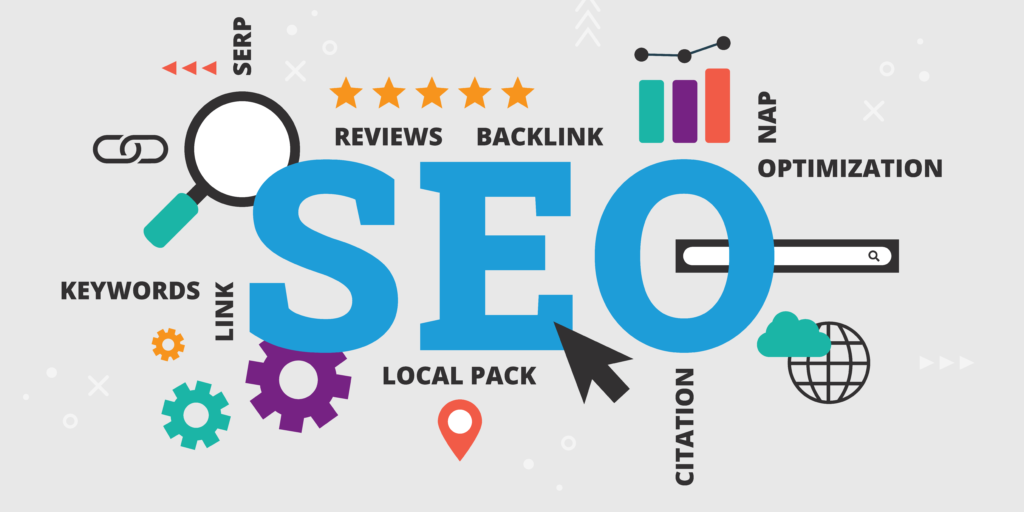In today’s digital landscape, having a solid online presence is crucial for business success. A key factor in achieving visibility and driving traffic to your website is effective Search Engine Optimization (SEO). SEO plays a vital role in digital marketing campaigns, helping businesses to rank higher on search engine results pages (SERPs), thereby attracting more potential customers.
Whether you’re just starting with SEO or looking to enhance your current strategy, this comprehensive guide will walk you through the steps of using SEO to improve your digital marketing campaigns.
1. Understanding the Importance of SEO in Digital Marketing
SEO refers to the practice of optimizing a website to rank higher on search engines like Google, Bing, and Yahoo. This optimization is not only about improving the content on your site but also about enhancing the technical aspects that search engines use to determine rankings.
Digital marketing campaigns are designed to achieve a variety of goals, such as brand awareness, lead generation, and conversions. Integrating SEO into these campaigns can significantly boost your success rate by ensuring that your website is visible to the right audience. The primary goal of SEO is to improve your organic search visibility, which means you won’t have to rely solely on paid advertising.
By focusing on SEO, businesses can drive targeted traffic, build trust with their audience, and improve conversion rates—all crucial elements for a successful digital marketing campaign.
2. Conducting Keyword Research for Effective SEO
The foundation of any SEO strategy is thorough keyword research. Identifying the right keywords is essential for ensuring that your content aligns with the search intent of your target audience. By targeting the right keywords, you increase the likelihood that your website will appear in relevant search results.
When conducting keyword research, consider the following:
- Search Volume: How many users are searching for a particular keyword? Target keywords with a high search volume for more visibility.
- Keyword Difficulty: Are you competing against highly authoritative websites? Use keyword tools to assess how difficult it might be to rank for a specific term.
- Search Intent: Understand what users are looking for when they enter a specific query. Are they seeking information, a product, or a service? Tailor your content to meet these needs.
Incorporating a mix of short-tail and long-tail keywords into your content will ensure that you’re reaching a broad audience while also targeting niche markets.
3. Optimizing On-Page Elements

On-page SEO refers to the optimization of elements on your website that directly affect search engine rankings. These elements include your content, headers, meta descriptions, and internal linking structure. Optimizing these on-page elements can significantly improve your SEO and help your digital marketing campaigns reach their full potential.
Here are some key on-page SEO strategies to consider:
3.1 Content Optimization
Your content is the most important factor for ranking high on search engines. High-quality, engaging, and informative content will not only attract visitors but also encourage them to stay on your site longer, reducing bounce rates. Ensure that your content includes:
- Keyword Integration: Use your target keywords naturally within your content. Avoid keyword stuffing, as this can negatively impact your rankings.
- Readable Format: Break your content into short paragraphs, use bullet points, and include images or infographics to make your content more visually appealing and easier to read.
- Content Length: Long-form content tends to perform better on search engines, but it must be relevant and informative. Aim for a word count of at least 1,000 words to ensure you’re covering topics in-depth.
3.2 Title Tags and Meta Descriptions
Title tags and meta descriptions play a crucial role in how your website appears in search results. These elements should be optimized to include your target keywords while also enticing users to click on your link. Keep your title tags under 60 characters and your meta descriptions under 160 characters to ensure they display correctly on search engine results pages.
3.3 Internal Linking
Internal links connect different pages on your website, allowing search engines to crawl and index your content effectively. They also improve user experience by helping visitors navigate through your site. Make sure to use descriptive anchor text for your internal links, and avoid over-linking, as it can dilute the effectiveness of your SEO.
4. Building Quality Backlinks
Backlinks—links from other websites that direct users to your site—are one of the most important ranking factors in SEO. Building high-quality backlinks can significantly improve your site’s authority and search engine rankings. The more authoritative and relevant the website linking to you, the greater the SEO value of the backlink.
Here are a few strategies to build backlinks:
- Guest Blogging: Write guest posts on authoritative websites in your industry, and include a link back to your website.
- Broken Link Building: Find broken links on other websites in your industry, and offer your own content as a replacement.
- Content Promotion: Create shareable content, such as infographics or industry reports, and promote it on social media and other platforms to encourage backlinks.
Remember, quality is more important than quantity when it comes to backlinks. Focus on acquiring links from reputable websites in your niche to improve your SEO and boost your digital marketing efforts.
5. Enhancing User Experience (UX)
Search engines prioritize websites that provide a positive user experience. Factors such as site speed, mobile-friendliness, and ease of navigation all play a significant role in determining your website’s search rankings.
5.1 Site Speed
A slow-loading website can negatively impact user experience and increase bounce rates. Aim for a page load time of under three seconds to ensure that visitors stay on your site longer. Use tools like Google PageSpeed Insights to test your website’s speed and identify areas for improvement.
5.2 Mobile Optimization
With more users browsing the web on mobile devices than ever before, ensuring that your website is mobile-friendly is essential for both SEO and user experience. Use responsive design to ensure that your website adapts to different screen sizes and provides a seamless experience across devices.
5.3 Easy Navigation
A well-organized website with a clear navigation structure makes it easier for both users and search engines to find relevant content. Use categories, tags, and clear menus to help visitors navigate through your site quickly and efficiently.
6. Tracking and Analyzing SEO Performance
Once you’ve implemented SEO strategies in your digital marketing campaigns, it’s important to track and analyze your performance. Monitoring key SEO metrics will help you identify areas of improvement and refine your strategies for better results.
Google Analytics and Google Search Console are two essential tools for tracking SEO performance. These tools provide valuable insights into organic traffic, user behavior, keyword rankings, and much more. By regularly monitoring your SEO metrics, you can adjust your campaigns to ensure continuous improvement and success.
7. SEO Best Practices for Long-Term Success

SEO is a long-term game, and it takes time to see results. However, by following best practices and continuously optimizing your website and content, you can achieve sustainable growth and visibility in search engine results.
Here are some SEO best practices for long-term success:
- Stay Updated: Search engine algorithms are constantly evolving. Stay informed about the latest SEO trends and algorithm updates to ensure your website remains optimized.
- Consistency is Key: SEO requires consistent effort. Regularly update your content, build backlinks, and optimize your website to maintain and improve your rankings.
- Focus on Quality: Quality content and high-authority backlinks will always outweigh quantity. Focus on delivering value to your audience, and the SEO results will follow.
Conclusion
Incorporating SEO into your digital marketing campaigns is essential for achieving long-term success and driving targeted traffic to your website. By conducting thorough keyword research, optimizing your on-page elements, building quality backlinks, and enhancing the user experience, you can significantly improve your search engine rankings and increase your online visibility.
Keep track of your performance, stay updated with SEO best practices, and be patient, as the results will come with consistent effort.
Remember, SEO is a continuous process, but when done right, it can be one of the most effective and cost-efficient methods of boosting your digital marketing campaigns. Start optimizing today, and watch your business thrive in the digital space!

